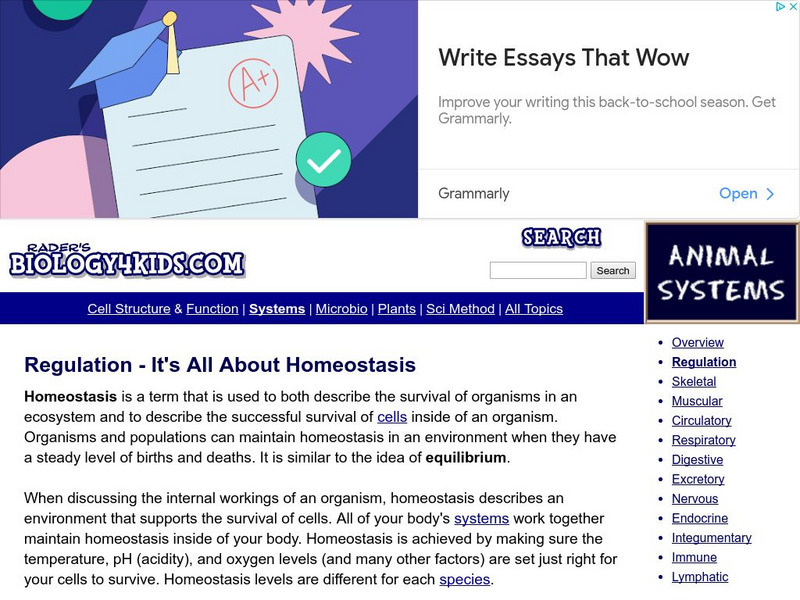Hi, what do you want to do?
Curated OER
Using Conditionals: If and Unless
In this using conditionals: if and unless worksheet, students read the explanations and examples, then interactively complete 12 sentences with immediate online feedback.
Curated OER
Visual Communication of Quantative Data
Students collect and analyze data based on academic performance. In this statistics lesson, students create graphs and analyze the data they created. They use positive, negative and no correlation to analyze the data.
Curated OER
Biochemistry, Secretion, and Transport of Hormones
In this biology worksheet, students look at various steps involved in the biochemistry involved in the use of hormones on the human body.
Curated OER
DC Generator Theory
In this online activity students answer a series of 14 essay or short answer questions explaining the DC generator theory. The correct answer is available to check their responses to each question. The questions vary in complexity....
Curated OER
What is Small Group Interaction?
While all learners need to know the benefits and responsibilities of working in a small group, this presentation and its vocabulary are geared toward a late high school or early college student. Why do we study in small groups? Why do...
Curated OER
Why Do We Suffer From The Rights Of Others?
Students examine how diversity within populations has caused problems. In groups, they develop their own definitions of racism and discrimination. They participate in role-plays in which they gather the appropriate techniques to deal...
Curated OER
Energy Sources
Students identify natural resources and describe the difference between renewable and non-renewable resources. They also identify the disadvantages and advantages of the resources.
Curated OER
The Family That Endured An Historical View of African-American Families As Seen Through American Literature and Art
Students identify racial stereotypes in advertisements from the past and survey their sources and implications. They compare advertisements from the past with those of today using similar approaches and create an original advertisement...
Curated OER
Hold Off on the Headphones
Students determine that waves carry energy and information from one place to another. They determine that wavelength, frequency and wave speed are related and describe that sound is a longitudinal wave whose speed depends on the...
Curated OER
Thoughts to Page: Explorations and Expressions
Pupils are introduced to the correct techniques to use for proper writing. In groups, they practice the use of clustering to help them organize their thoughts and identify the main idea of their paper. To end the lesson, they write...
Curated OER
Paw-er up for PowerPoint
Sixth graders explore how to transfer research material into a PowerPoint Presentation.
Curated OER
Controlling the Code: Molecules at Work
In this DNA worksheet, students access a website to learn about how single-celled organisms function successfully. Then students pretend they are a bacterium and determine how to transport lactose across their cell membrane for food....
Climate Literacy
Clean: Climate Feedback Loops
This is the seventh of nine lessons from a student learning module called "Visualizing and Understanding the Science of Climate Change." This lesson addresses climate feedback loops and how these loops help drive and regulate Earth's...
TED Talks
Ted: Ted Ed: Feedback Loops: How Nature Gets Its Rhythms
Anje-Margriet Neutel describes some common positive and negative feedback loops, examining how an ecosystem's many loops come together to make its 'trademark sound.' [5:11]
National Inventors Hall of Fame
National Inventors Hall of Fame: Harold Stephen Black
This site honors Harold Stephen Black for his inventions of the wave translation system and the negative feedback amplifier. Content includes a brief biography of the inventor as well as a look at how his inventions have impacted society.
Biology 4 kids
Biology4 Kids: Regulation It's All About Homeostasis
Discover the significance of homeostasis in organisms. Identify negative and positive feedback and how systems work to balance temperature in an organism.




















